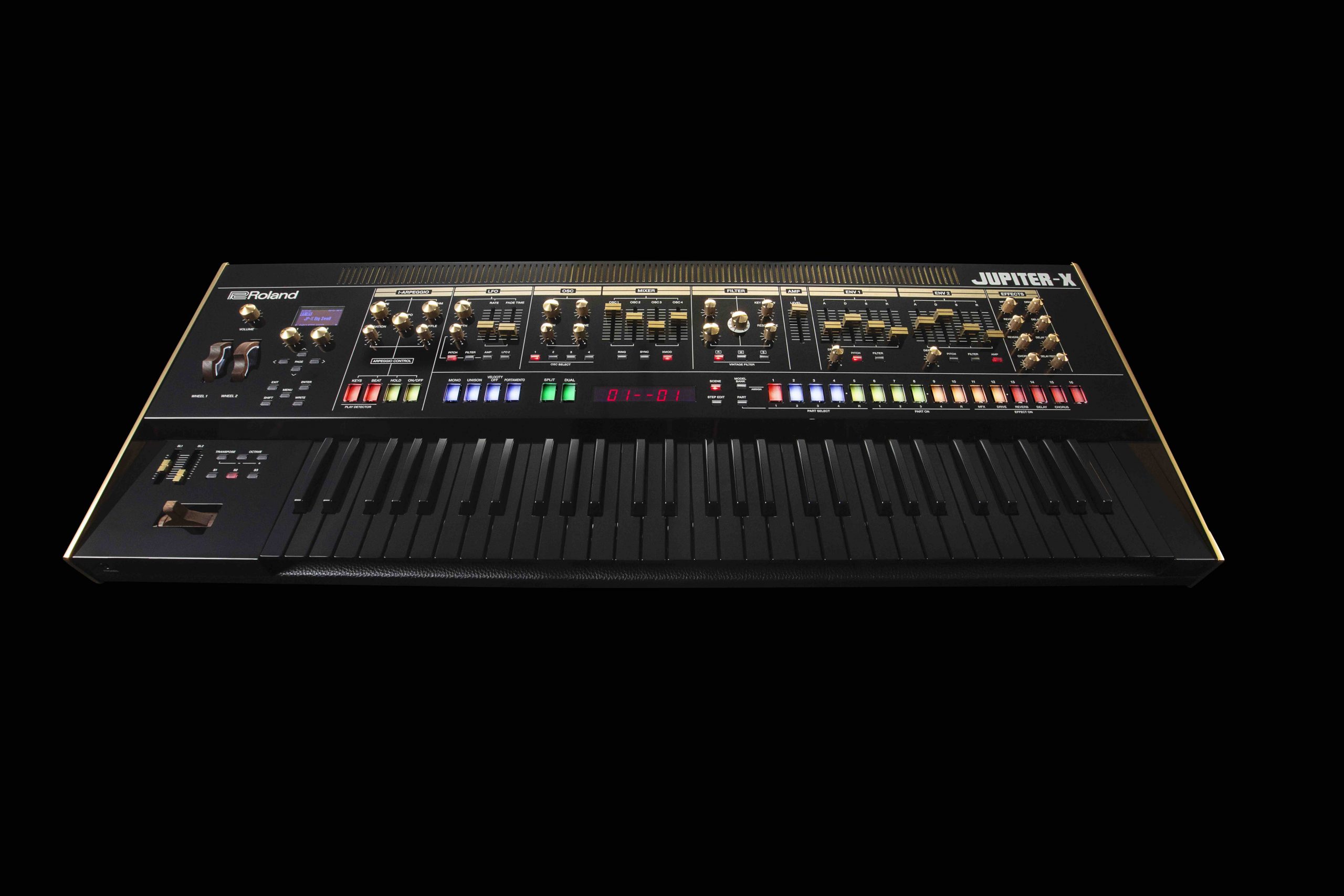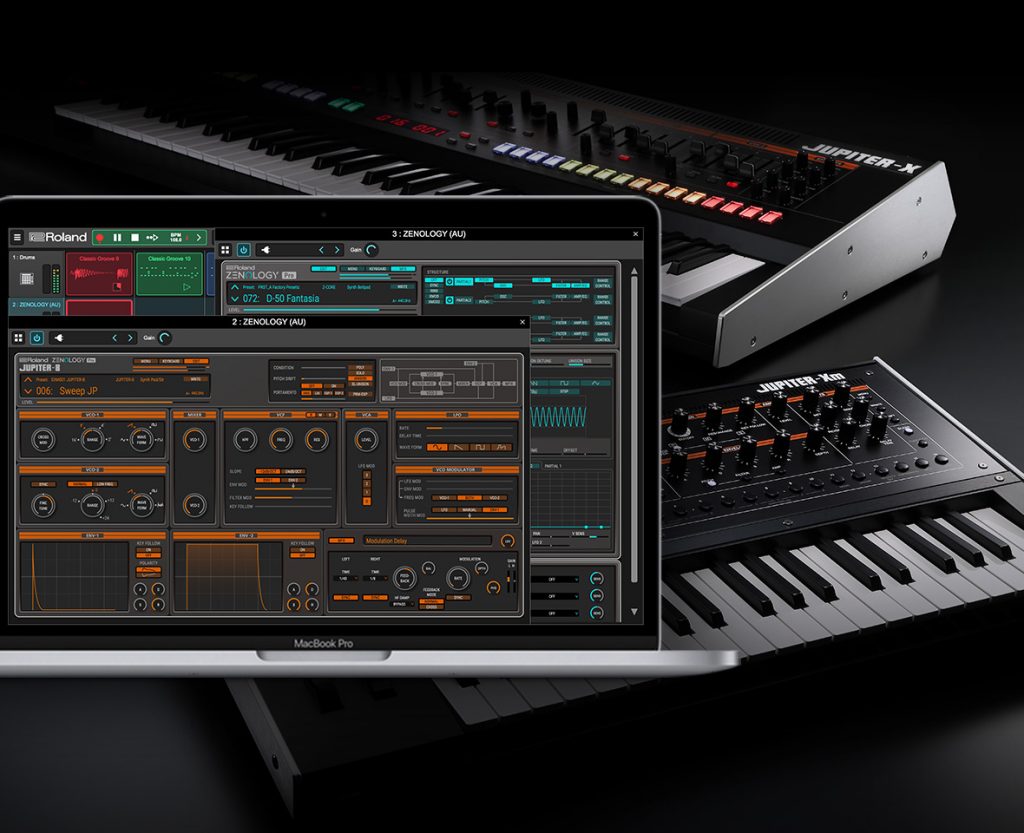The pantheon of synthesizer gods is wide and varied, with deities heavenly, malevolent, and all points in between. At the top, though, is Roland’s JUPITER, the king of the polysynths. In the 44 years since the release of the first JUPITER, the line has become synonymous with the cutting edge. For more than four decades, each new instrument pushed the envelope of its respective era. Along the way, these landmark synthesizers have also left indelible marks on music and culture. Let’s look at some of the highlights of the series—with the original Roland engineers as our guides.


JUPITER-4: The Beginning
If the first part of the decade of the 1970s belonged to the monophonic analog synthesizer, then the second half was all about polyphony. Although Roland only came into being in 1972, by 1974, the company’s first polyphonic synthesizer was already in development. This was the four-voice JP-4, otherwise known as the JUPITER-4. Released in 1978, it had a solid, warm, and meaty sound as well as a useful arpeggiator. Musicians like Nick Rhodes from Duran Duran took to it instantly—check out D2’s “Rio” to hear it in action. With its distinctive tone, the JUPITER-4 retains many fans. Still, Roland was already hard at work on a game changer.
JUPITER-8: An Icon Emerges
“I joined Roland with the big motivation of designing Japan’s first polyphonic synth,” remembers Toshio Yamabata, former Roland engineer on the JUPITER-8 project. Yamabata came on board too late to join the JP-4 team but was perfectly positioned for the next one in line: the JUPITER-8.
Upon its release in 1981, it was clear that the JP-8 was a watershed moment in synthesizers. More than a mere continuation of a line, this was like a lightning bolt thrown down by the sky god himself, Jupiter. Living up to its name, the JUPITER-8 was an eight-voice, two-oscillator synthesizer with a warm sound and a wide sound creation palette. The latter was thanks to oscillator-expanding features like cross modulation, oscillator sync, and pulse width modulation.
"The JUPITER-4 had a solid, warm, and meaty sound as well as a useful arpeggiator. Musicians like Nick Rhodes from Duran Duran took to it instantly."
Sonic Advancements
The JUPITER-8 had unique performance advancements as well, such as the ability to split the keyboard into two separate patches. Users could even save these with pattern memory. The instrument also looked immediately iconic. Gone were the blocky preset buttons and heavy wood of the older synths, replaced by sleek multi-colored buttons and a metal housing.
Additionally, there was a lot going on under the hood that helped set the JUPITER-8 apart from the stiff competition of the time. Before DCOs and digital control of oscillator pitch, temperature changes could wreak havoc on tuning. To help sounds stay in tune, the team designed a new temperature compensation circuit.
Even with the updates, Yamabata laments that the tuning wasn’t as accurate as he’d have liked. This was due largely to the processing power of the parts and the Z-80 chip. Ironically, this “became a major factor in its soft and warm tone, which is a unique feature of JUPITER-8.” Another change was custom VCF and envelope ICs. “At that time, there was almost zero experience, know-how, or tools at Roland to make a custom IC,” explains Yamabata. “We had to design it by combining transistors in hand-made test circuits.”

"The accuracy and processing power of the parts became a major factor in its soft and warm tone, which is a unique feature of JUPITER-8." -Toshio Yamabata


Cultural Impact
The shock wave generated by the release of the JUPITER-8 was immediate and undeniable. It became the sound of synth-pop overnight. Synth hero Howard Jones even put one on the cover of his first single, “New Song.” Its influence wasn’t limited to synth-pop either. Marvin Gaye changed the sound of soul with one (and a TR-808) on “Sexual Healing.” The JUPITER-8 helped Michael Jackson’s Thriller sell 70 million copies worldwide. The instrument even made its way into the rigs of experimental outfits like Tangerine Dream. It’s hard to overstate the cultural impact of the JUPITER-8.
The Digital Wave
The JUPITER analog era continued with the JUPITER-6 (1983) and MKS-80 Super JUPITER (1984). However, by the end of the ’80s synthesis was moving in a different direction. During this new era, the JUPITER would shapeshift into new forms. Different worshippers know the Roman god Jupiter by different names: Zeus in Greece, Tinia to Etruscans. Similarly, Roland’s JUPITER took on unique monikers for different instruments.
In the late ’80s, Roland began planning a new synthesizer. There was its D series of digital synthesizers, such as the D-50—which were very popular. Roland hit on the idea to combine elements of both digital and analog in a reborn flagship JUPITER-8. But what to call it?
"We wanted to highlight that this was a digital synthesizer even if it looked like an analog one, so Jupiter plus Digital became JD." - Kazz Takahashi
What’s in a Name?
Former Roland engineer and JD-800 project lead Kazz Takahashi picks up the story. “First, we called it Digital Jupiter. Of course, we were imagining the JUPITER-8. The name JP recalled JP-8, so if we named it JP-800, the first impression of this model might be a revival of JP-8.” It was an exciting time in the world of synthesizers. “At that time in the market, digital synthesizers were in full bloom,” Takahashi states. “We wanted to highlight that this was a digital synthesizer even if it looked like an analog one, so Jupiter plus Digital became JD.”
JD-800: A Hands-on Synth
The newly christened JD-800 arrived in 1991. A JUPITER in disguise, it married hands-on analog-style control with a powerful digital sound engine. The latter, Roland based on the D-50’s Linear Arithmetic Synthesis structure. Combining PCM sample playback with virtual analog, the instrument allowed for heretofore impossibly realistic acoustic instrument reproduction. That is, if that’s what you wanted. It was just as capable of generating traditional synthesizer sounds and wild, futuristic timbres.
The JD-800 also sounded incredible. Its jaw-dropping sonic quality was the result of the engineering team increasing the sampling rate from 32kHz to a CD-quality 44.1kHz. Takahashi explains: “At that time, 32kHz sampling was the standard at Roland. Through this change, the sound quality improved incredibly. I think this was our biggest engineering challenge.” It certainly paid off. And personally for Takahashi as well. When asked about his favorite feature of the JD-800, he answers, “It is not a function but a spec. The 44.1kHz sampling rate is my favorite.”
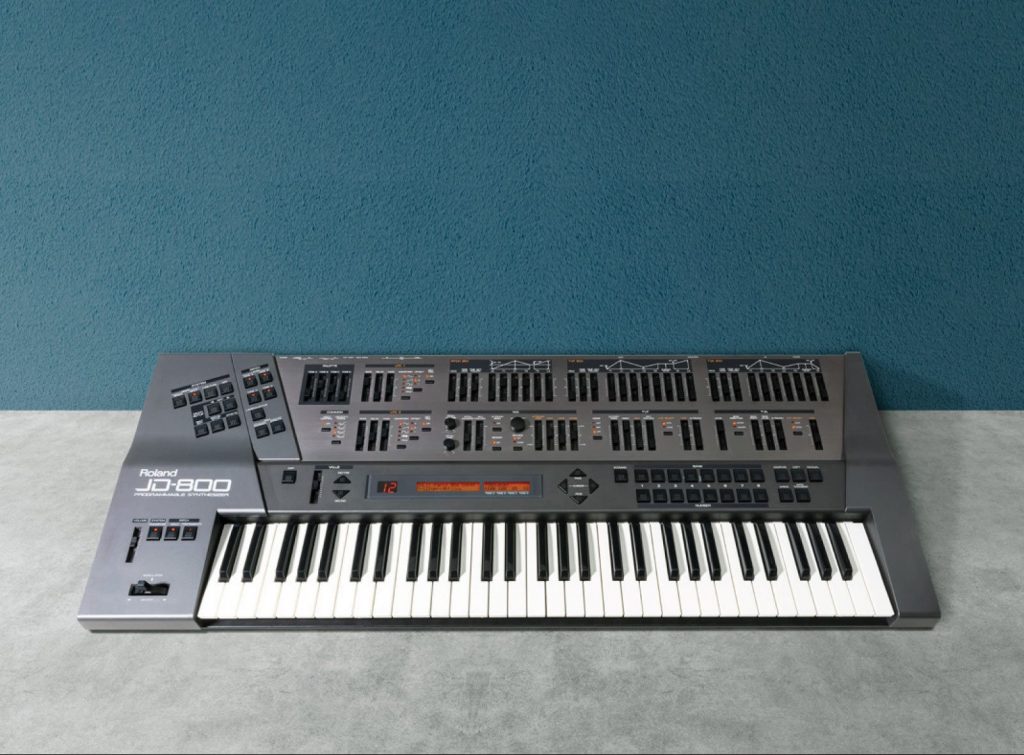
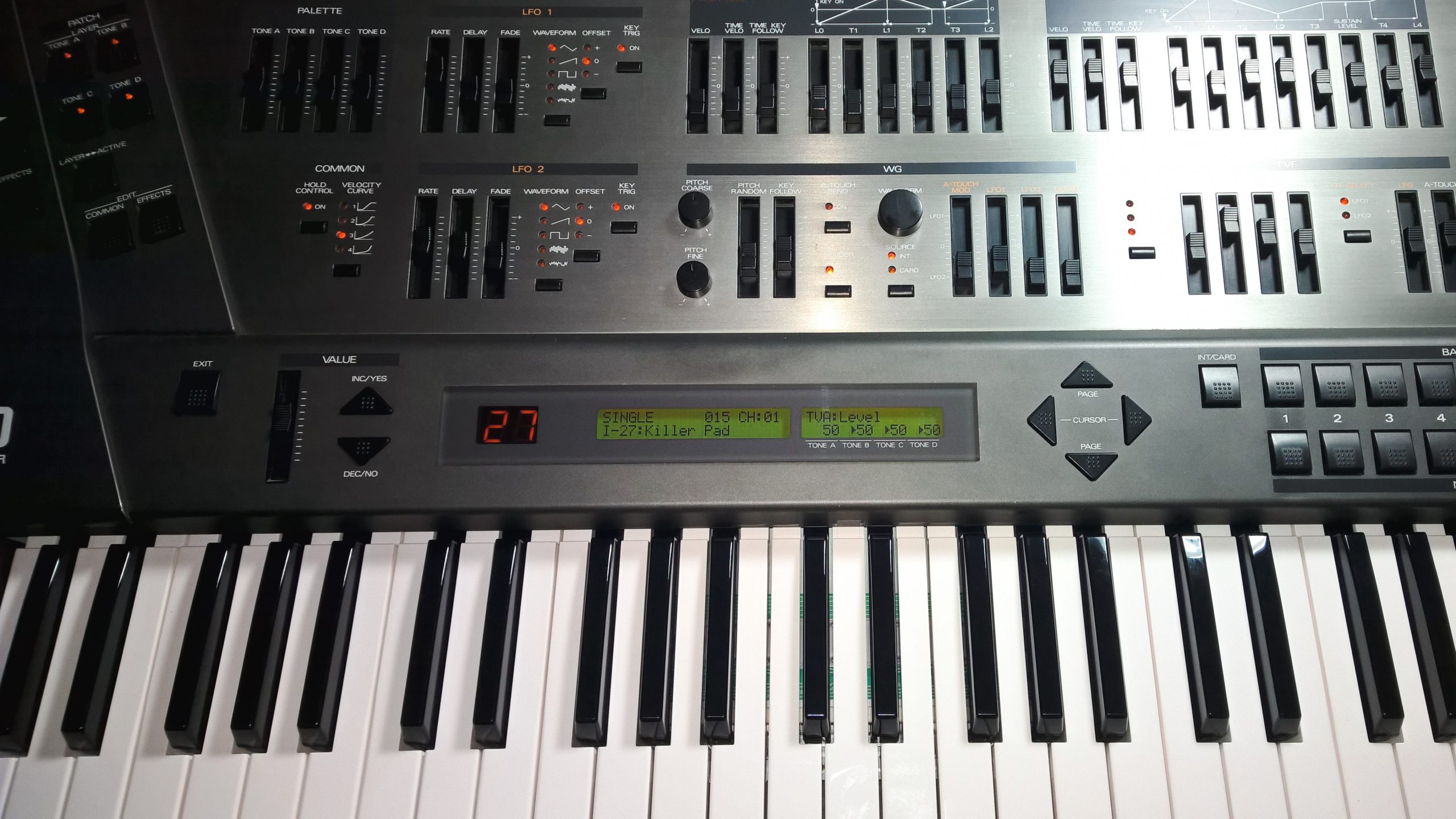
"A JUPITER in disguise, the JD-800 married hands-on analog-style control with a powerful digital sound engine."

Part of the appeal of the JD-800 were all those knobs and sliders. Stretching as far as the eye could see—or at least as the arm could reach—they begged for tactile tweaking. The JD-800 brought JUPITER-style sound creation to the digital era. “The policy of the synthesizer was to be able to create sounds with ease,” explains Takahashi. “Sometimes accidents bring unexpected sounds while touching sliders. We wanted to remind people how fun it is to create sounds.”
Famous Fans
With its melding of hands-on control and digital synthesis, the JD-800 was a pioneering instrument. Those that took to it did so with passion. Prince was a particular fan, with the Purple One using it all over “Rave Un2 The Joy Fantastic.” It was also popular with dance music producers such as A Guy Called Gerald, Sasha, The Prodigy, and Mouse On Mars who, having worked extensively with vintage Roland gear, instantly understood the appeal of tweakable controls. Dance music producers would have an even bigger response to the next entry in Roland’s JUPITER line: the JP-8000.
"With its melding of hands-on control and digital synthesis, the JD-800 was a pioneering instrument."
JP-8000: Expanding Sound
As the JUPITER concept evolved, the engineers added fresh features to its sonic makeup. Takanari Arakaki, the former Roland engineer and JP-8000 project lead, explains, “The oscillator part on the JP-8000 could be changed to a more complicated tone by adding pre-modulated supersaw waveforms, feedback oscillator, and triangle mod. This was in addition to the sawtooth, square, triangle, and noise on the JP-4 and JP-8.”
It was this supersaw wave that would prove to be the killer touch. With seven de-tuneable sawtooth waves, the perfectly named supersaw generates a massive, buzzy lead sound. It cuts through mixes as easily as the bass at a gargantuan warehouse rave. Trance music producers went wild with it. Check out Darude’s epic hit, “Sandstorm,” to hear it in all its glory.
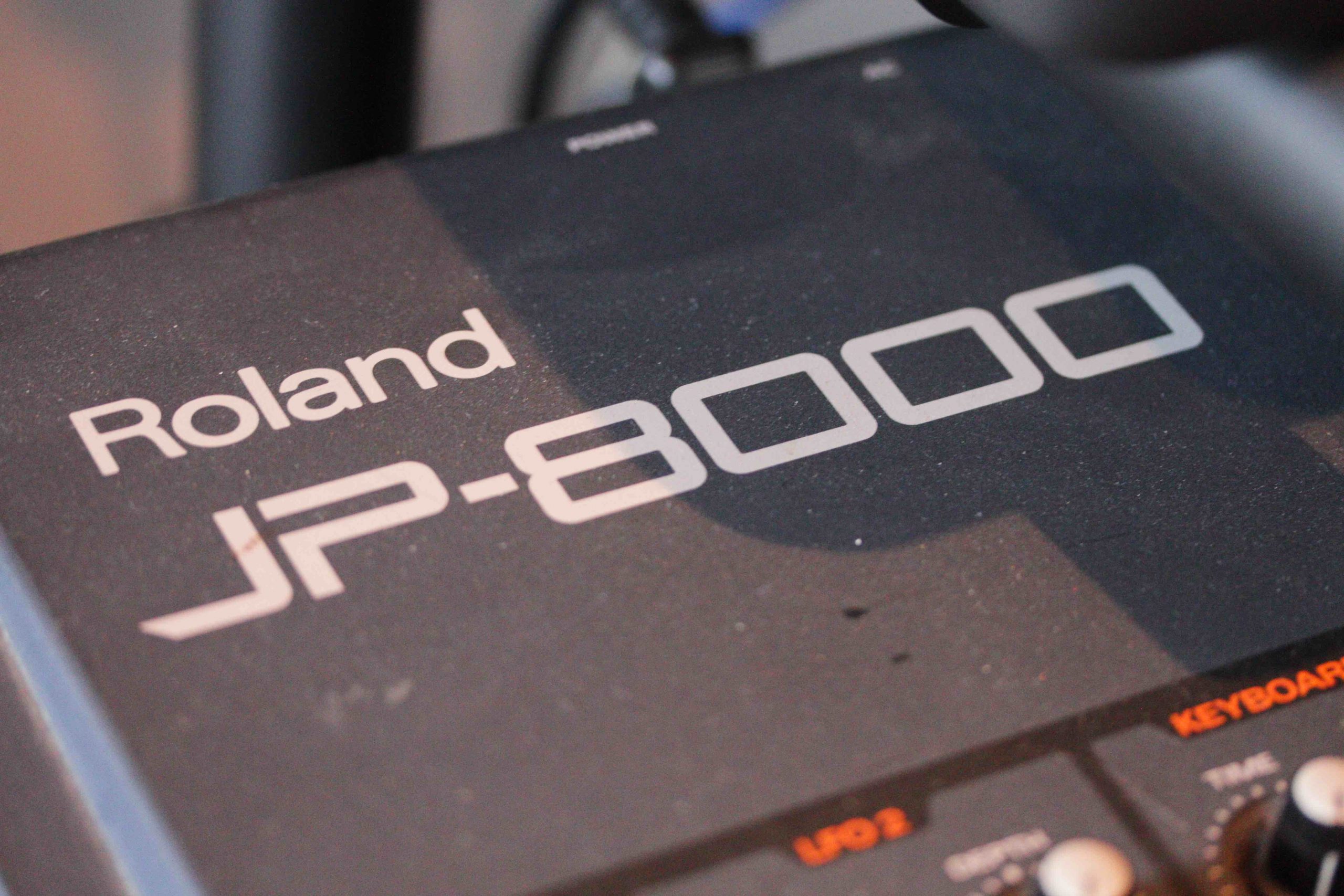
"Whenever Roland has named a synthesizer JUPITER or JP, it’s a flagship model that implements the state-of-the-art technologies of that era." -Akihiro Nagata

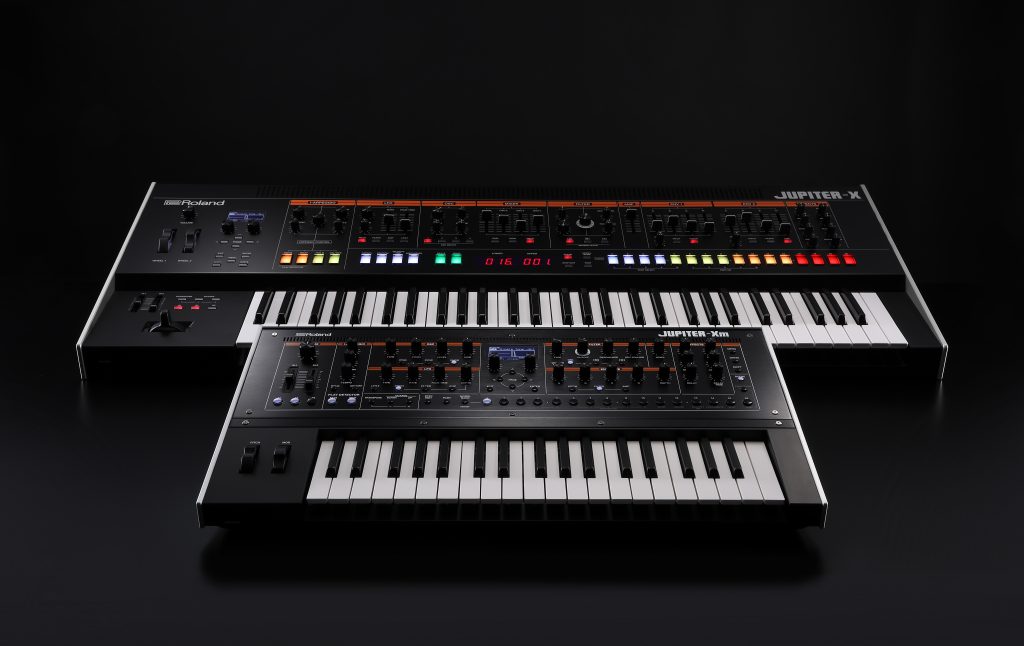
JUPITER-X: The Return of the King
“The JUPITER brand is very symbolic to Roland,” states Akihiro Nagata, Manager, Music Synthesizer Development Dept. “Whenever Roland has named a synthesizer JUPITER or JP, it’s a flagship model that implements the state-of-the-art technologies of that era. JUPITER-X is undoubtedly the same.”
Indeed, it’s difficult to imagine a more state-of-the-art re-imagining of a JUPITER. The JUPITER-X boasts a unique sound engine, Model Expansions based on classic instruments like the JP-8, an AI arpeggiator, and ZEN-Core synthesis at its heart. Nagata sums it up succinctly: “JUPITER-X is absolutely the successor of the JUPITER lineup for the 2020s.”
Feedback Loop
Roland consistently listens to its customers, and the company found that something users wanted was a modern JUPITER that reflected the classic JP-8 in more ways than just sound. Hisakazu Yamasato, Synthesizer Division Head comments on one particular aspect of those user requests. “Our market research showed that vintage models such as the JUPITER-8 and JUNO-106 are recognized not only by their sound but also by their appearance,” Yamasato explains. “JUPITER-X was the first time that we designed a synth using exactly the same material and same panel design concept of the JUPITER-8.”
The JUPITER-X may recall the sleek, multicolored look of the original JP-8, but inside lives a very different polysynth. In fact, it might be more accurate to say that it’s many different polysynths. Plural. With its ability to play Model Expansions, emulations of classic Roland instruments, it can be any number of synthesizers. These range from the classic JP-8 to the monophonic SH-101 to the groundbreaking JD-800.
The latest update to the instrument is the JUPITER-X Model, a unique sound engine developed to usher in the next evolution of JUPITER sound. Building on the classic JUPITER heritage, it modernizes vintage analog sounds with unparalleled capabilities and creation options.
“Roland has many historic synthesizers. Each one of them has different attractions. So we wanted to provide as many models as we could." -Akihiro Nagata
JUPITER: Into the Future
“Roland has many historic synthesizers,” explains Nagata. “Each one of them has different attractions, and we know many Roland fans love them. So we wanted to provide as many models as we could.” Users can also layer these Model Expansions, making it something of a super JUPITER synthesizer. As Yamasato sums up, “We proposed a completely new JUPITER here.”
When asked if he feels the JUPITER-X is something of a Roland’s “greatest hits” synth, Nagata answers enthusiastically. “Yes, of course! And the customer community has been growing in conjunction with our continuous firmware updates and Roland Cloud content expansion,” he says. “We believe JUPITER-X will be not only a greatest hit but also a longevity product.”
While Nagata was referring specifically to the latest JUPITER, he may as well have been talking about the entire JUPITER lineup. These days, the JUPITER-4, JUPITER-8, and JD-800 even exist in virtual form within Roland Cloud.
To celebrate the company’s half-centennial milestone, Roland produced a highly limited quantity of the JUPITER-X 50th Anniversary Model, a unique exhibition instrument with black keys and gold accents. Although not a commercial product, Roland will showcase the 50th Anniversary Model at synthesizer events worldwide, beginning in Osaka, Japan—the birthplace of Roland—in late May of 2022. No matter what form these synthesizers take, the JUPITER name continues to represent the pinnacle of Roland innovation and excellence.
